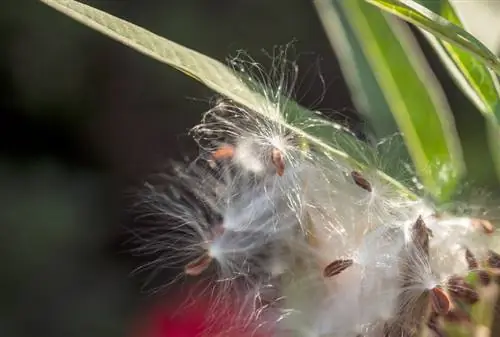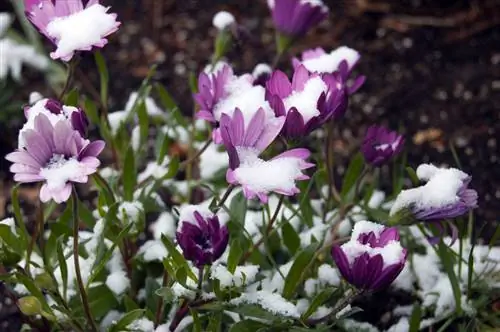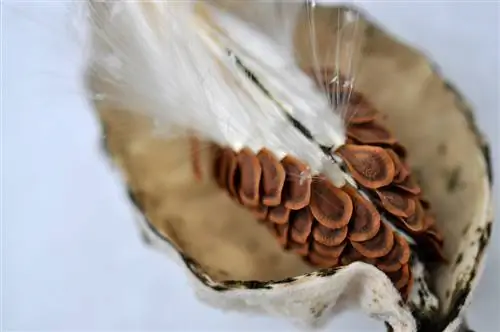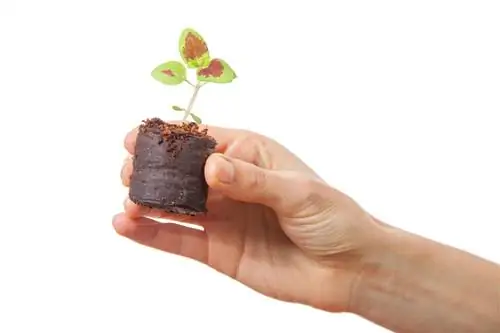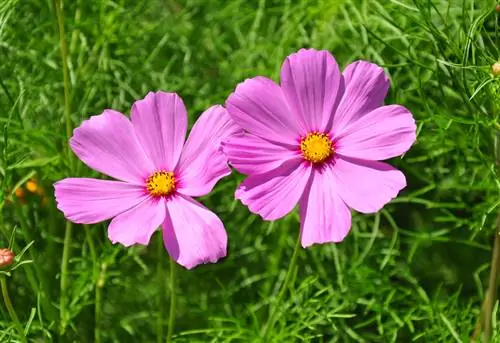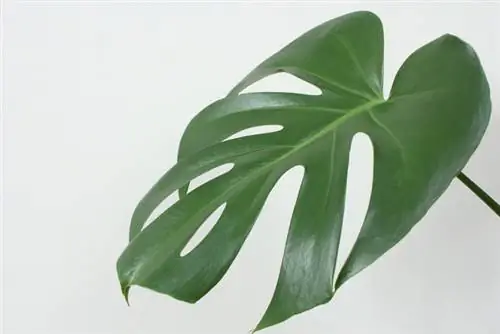- Author admin [email protected].
- Public 2023-12-16 16:46.
- Last modified 2025-01-23 11:20.
They are emerald green, hang in large numbers on the shoots and their feathery appearance is reminiscent of budgies. The fruits of the parrot plant are not only used as decoration. The seeds they contain are suitable for propagation.

How to sow the parrot plant?
Sowing the parrot plant is best done in spring: 1. stratify seeds in the refrigerator, 2. Allow to pre-soak in water, 3. fill the seed tray with sowing soil, 4. sow two seeds each 4 cm apart, 5. cover the seeds flatly with soil, 6. carefully moisten the substrate and 7. place the container in a bright and warm place.
Harvesting the seeds
The seeds of the poisonous parrot plant ripen in autumn. Once ripe, the strange fruits burst open. Then you have to be quick, otherwise the seeds with their silk-like threads will be blown away by the wind. It is not uncommon for self-sowing and successful germination to occur from March of the following year.
Stratify the seeds or not?
While some gardeners are of the opinion that the seeds of the parrot plant have to be stratified for a while, other gardeners have found that they germinate even without stratification (cold stimulus).
As a precaution, it is advisable to place the seeds in the refrigerator for about 1 week. There they are exposed to an artificial cold stimulus. You can then let the seeds soak in water before sowing.
Time for sowing
Everything prepared? Then you can get started:
- Fill pots or seed trays with sowing soil (mix in some sand if necessary)
- sow 2 seeds each 4 cm apart
- Cover seeds flatly with soil (attention: light germinators)
- Wet the substrate carefully (e.g. use a spray bottle (€7.00 on Amazon))
- Place the sowing container(s) in a bright and warm place
- if applicable cover with plastic bag, glass hood etc.
These seeds germinate best and fastest at an ambient temperature between 15 and 20 °C. Depending on the temperature, brightness and age of the seeds, germination occurs after 3 to 4 weeks (in rare cases after just one week).
Plant in a suitable location
This is what happens next with the plants:
- separate from 4 leaves
- transplanting into pots
- place in a light-flooded location
- plant outdoors after about half a year
- choose a sunny to partially shaded spot
- It is better to protect it in the first winter, as it is initially sensitive to frost
Tip
If you put a glass lid or plastic cover over the seeds so that the moisture doesn't evaporate so quickly, you should ventilate the seed container regularly to avoid mold formation.

